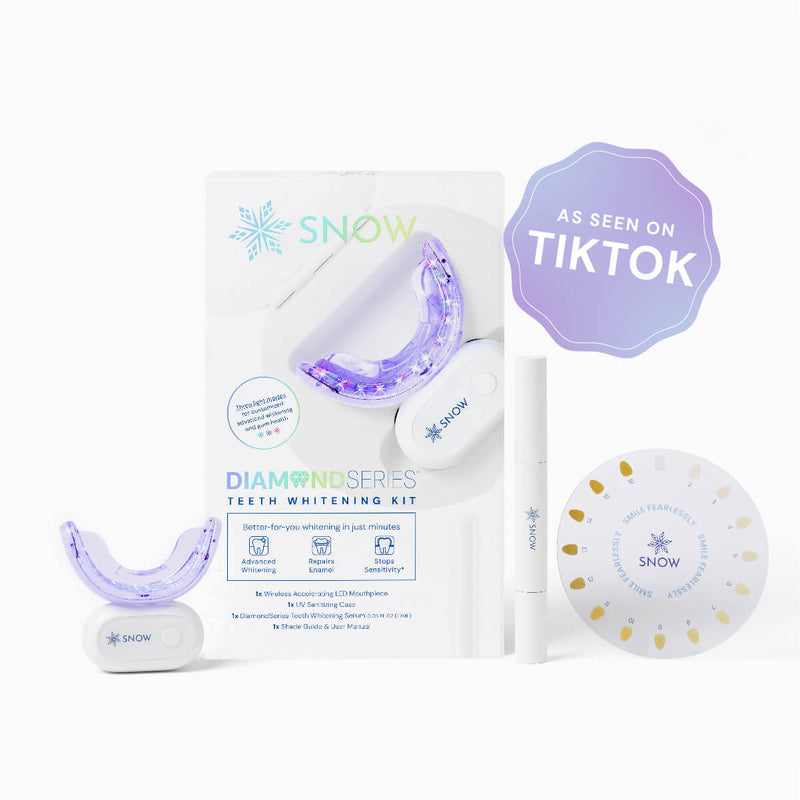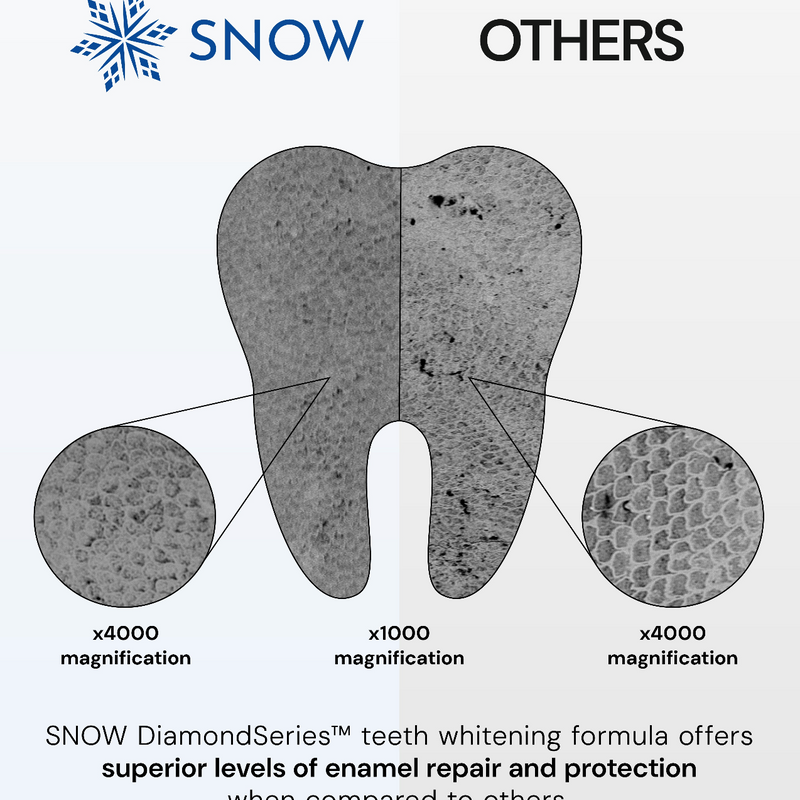There are many brands of mouthwash available at your local drugstore. However, to get your hands on the strongest antibacterial mouthwash available, you'll need a prescription from your dentist.
Medical-grade mouth rinses contain antibacterial properties called chlorhexidine. Popular chlorhexidine mouthwash brands include Peridex, Paroex, and PerioGard.
Chlorhexidine came into medical prominence in the 1950s. The solution is often a cool blue color that comes in a mint flavor. Patients have described the oral rinse as having a bitter or metallic taste.
WHAT IS CHLORHEXIDINE MOUTHWASH?
Chlorhexidine (CHX) mouthwash is a dentist-prescribed antibacterial mouthwash. It is also known as chlorhexidine gluconate and chlorhexidine digluconate (CHG). It's an antiseptic that can be used as a disinfectant and to treat certain oral conditions.
Your dentist may prescribe chlorhexidine mouthwash for gum disease treatment, canker sores, soreness, and to prevent infection.
It may also be prescribed after certain dental procedures or for people who require a more intense dental hygiene routine.
HOW TO USE CHLORHEXIDINE MOUTHWASH:
You'll need to brush your teeth first then afterward rinse your mouth with the chlorhexidine mouthwash. Dentists recommend that you rinse with the antibacterial solution twice a day, in the morning and in the evening. It's best to do it at the same time every day to prevent a missed dose.
You'll then measure out your necessary dosage and swish the oral rinse for 30 seconds. After spitting out the solution, you'll have to wait 30 minutes before rinsing, eating, drinking, or brushing your teeth.
A common dosage for adults is 15 milliliters, twice a day. However, dosages vary by individual.
Your daily dosage of chlorhexidine wash is dependent on your personal condition.
Chlorhexidine mouthwash should not be used in combination with other products and it should never be swallowed. It's also not suitable for children.
Unlike over-the-counter mouthwashes, chlorhexidine mouthwashes should be used sparingly. They should only be used for the duration of time that your dentist has prescribed. Treatment usually takes four to six weeks.
WHAT HAPPENS IF YOU MISS A DOSE?
A missed dose happens and that's okay. If you skip a dose, simply take the oral rinse as soon as possible. As long as it's not too close to the next dosage time or too close to mealtime. Be careful not to double dose to compensate for a missed dose. Doing so can be too harsh on your teeth and gums.
WHAT ARE THE BENEFITS OF CHLORHEXIDINE MOUTHWASHES?
Chlorhexidine mouthwash is effective at killing mouth bacteria that could lead to more severe oral conditions. There are key benefits to using chlorhexidine as well as side effects.
TREATS GUM DISEASE
Studies from the National Institute for Health Research have shown that chlorhexidine mouthwash is useful for people with gingivitis.
Gingivitis is an early form of gum disease that can cause inflammation, redness, puffy gums, and bleeding gums.
Chlorhexidine contains antibacterial properties that help decrease mouth bacteria. This helps alleviate the symptoms of early gum disease.
REDUCE PLAQUE BACTERIA
Tooth brushing and the antibacterial properties found in a chlorhexidine gluconate prescription rinse help reduce plaque buildup and kill yeast. Plaque is the sticky stubborn bacteria film that forms on the teeth and gums, often leading to gingivitis.
Left untreated, plaque can wreak havoc on your dental health and cause tooth decay, cavities, and periodontal disease.
PROMOTES A HEALTHY MOUTH
The powerful antibacterial properties found in chlorhexidine mouthwash are especially effective after deep cleaning procedures. Procedures such as deep teeth cleanings, root canals, tooth scaling, and root planing may leave the patient with raw and sensitive gums. Patients benefit from the bacteria-crushing ingredients as part of their aftercare routine.
CHLORHEXIDINE MOUTHWASH SIDE EFFECTS
Chlorhexidine gluconate mouthwash may cause certain side effects. A dental professional or pharmacist can explain these possible chlorhexidine effects in further detail.
COMMON SIDE EFFECTS MAY INCLUDE:
- Tooth staining or brown discoloration
- Tongue staining
- Tartar increase
- Dry mouth or throat irritation
- An altered change in taste
Thankfully, many patients do not encounter serious side effects. If your condition worsens after starting treatment, call your doctor or dentist to discuss other medicines.
Pregnant women should also consult their physician before taking chlorhexidine. The doctor will advise if it's safe to take during your pregnancy.
The benefits of using a chlorhexidine mouthwash tend to outweigh the potential effects. It's important to prioritize treating early gum disease before it advances and causes more damage. You and your dentist can discuss if chlorhexidine wash is the best solution for you.
ALLERGIC REACTIONS ARE RARE
A serious allergic reaction to chlorhexidine gluconate is rare. If you experience symptoms of swelling of the tongue, face, or throat, a severe skin rash, extreme dizziness, or difficulty breathing, seek medical attention immediately.
MINIMIZING SIDE EFFECTS
Certain actions can be taken to lessen the likelihood of some of these side effects.
For example, to minimize tooth and tongue staining you can level up your dental hygiene routine and brush your teeth three times a day. Teeth staining can also be addressed with teeth whitening products after treatment is completed.
To avoid excess tartar buildup, you can use a tarter-fighting toothpaste and floss regularly to prevent buildup between the teeth. Many patients also invest in an electronic toothbrush since the fast oscillation is effective for removing food particles and polishing teeth.
While using chlorhexidine mouthwash your ability to taste bitter and salty foods may be altered. To preserve your sense of taste, brushing your teeth and using the oral rinse after eating may help. Once you complete your chlorhexidine treatment, your sense of taste will return to normal.
Regular visits to the dentist will also help keep your mouth healthy and free of discomfort.
THE MOST EFFECTIVE ANTIBACTERIAL MOUTHWASH
As you've probably gathered by now, chlorhexidine is the most effective antibacterial mouthwash available. Chlorhexidine gluconate solutions typically contain concentration levels ranging from .06% to .12%.
This oral rinse is strong, therefore not recommended for long-term use. A dental professional prescribes chlorhexidine mouthwash to treat early to mild gum disease and often for post-deep cleaning in-office procedures.
Frequently Asked Questions
What does chlorhexidine mouthwash do?
Gingivitis is often treated with chlorhexidine. It helps to minimize gum inflammation (redness), swelling, and gum bleeding. Bacteria that develop in the coating (plaque) that accumulates on your teeth between brushings create gingivitis.
Is Listerine a chlorhexidine mouthwash?
Listerine is a popular antiseptic mouthwash. Despite its lengthy usage history, most studies have demonstrated that chlorhexidine is far more effective than Listerine in lowering plaque and gingivitis indices. Listerine has a harsh taste and causes some to experience a burning feeling.
Can you buy chlorhexidine mouthwash over the counter?
Chlorhexidine is available only with your dentist's or medical doctor's prescription.
Can I use chlorhexidine mouthwash every day?
Chlorhexidine mouthwash and teeth brushing lowers plaque buildup in persons with moderate gum disease in the first weeks of usage. However, if used for more than four weeks, chlorhexidine mouthwash can cause tooth discoloration and the formation of chalky deposits on the teeth known as tartar.
What are the drawbacks of chlorhexidine mouthwashes?
Before taking chlorhexidine, consider the following three negative effects:
- Staining: Chlorhexidine has the potential to discolor tooth surfaces, restorations, and the tongue.
- Taste modification: Some patients notice a taste change during therapy.
- Tartar formation. Some patients may notice more tartar formation on their teeth.
SUMMARY
Chlorhexidine mouthwash is a powerful oral rinse that fights gingivitis. Unlike popular over-the-counter mouthwash brands, you'll need a prescription for chlorhexidine gluconate.
There may be side effects such as tooth staining and a temporary altered change in taste. However, once treatment is completed the end result is a healthy mouth free of uncomfortable inflammation, swelling, and bleeding.



























